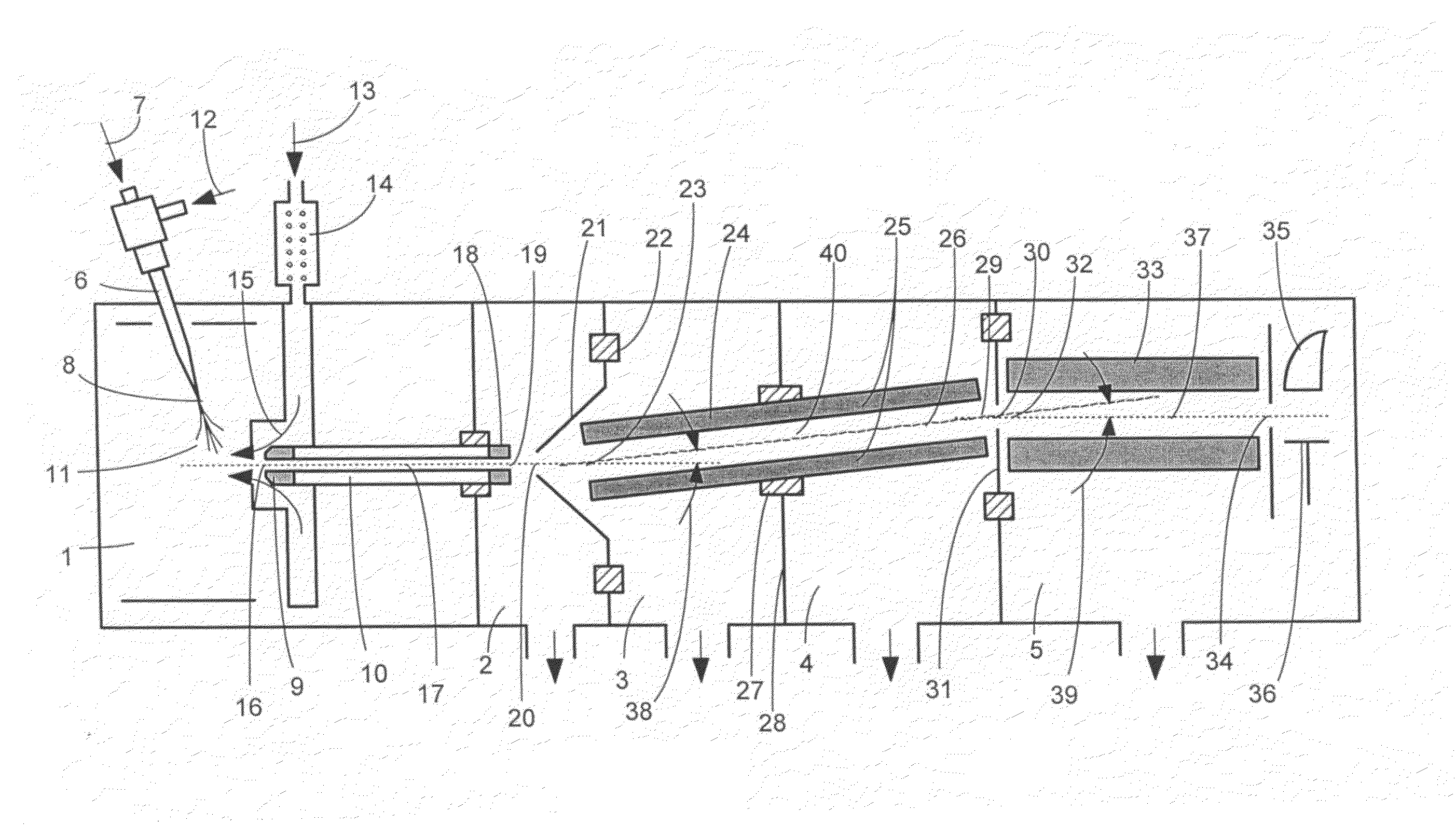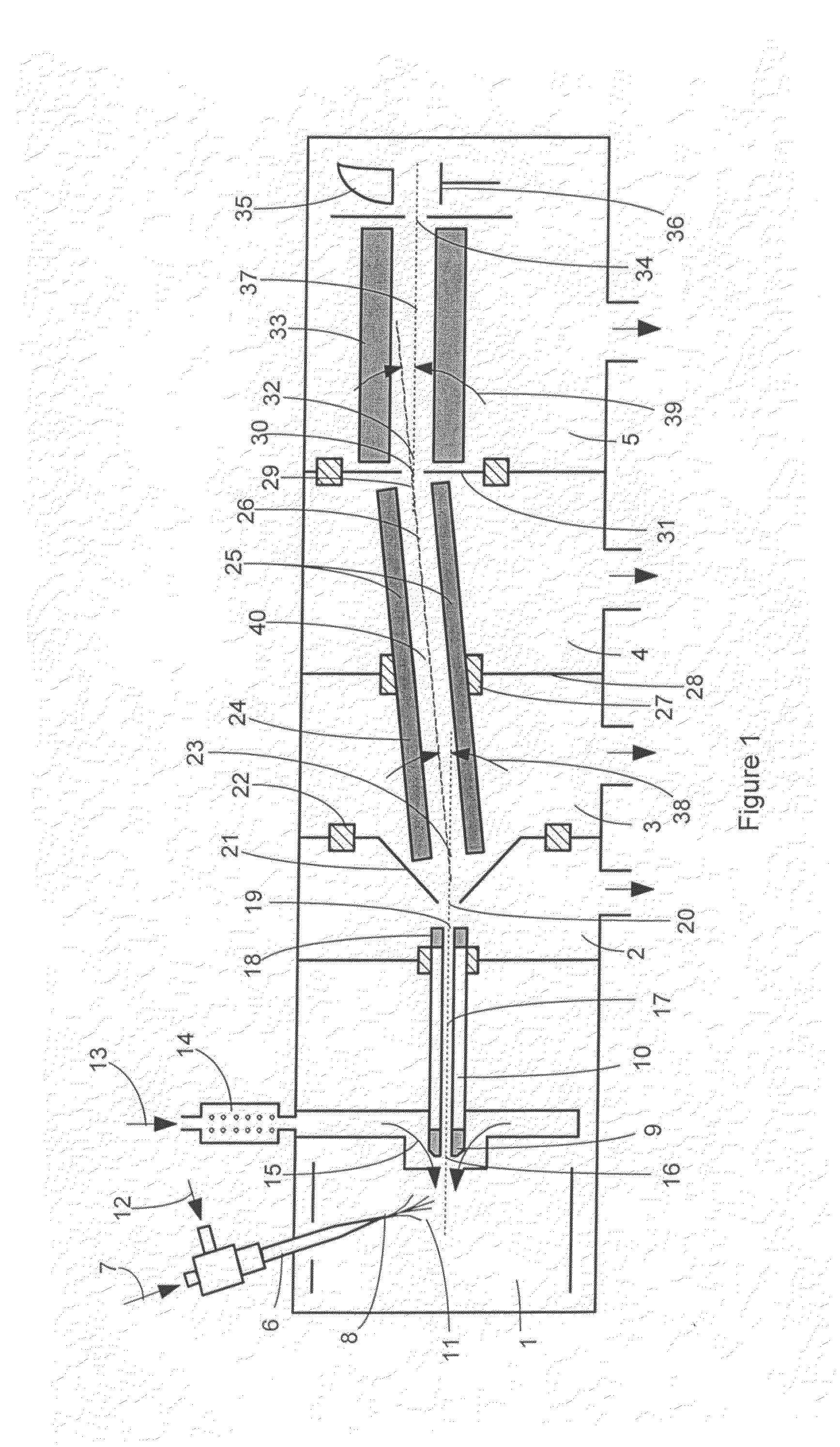Multipole ion guide interface for reduced background noise in mass spectrometry
a mass spectrometry and multi-ion guide technology, applied in the field of mass spectrometry, can solve the problems of reducing the signal-to-noise ratio, accumulating charge that distorts electric fields, and not being able to effectively eliminate particles by the mass analyzer, so as to improve the transmission efficiency of ions and reduce the number of background particles
- Summary
- Abstract
- Description
- Claims
- Application Information
AI Technical Summary
Benefits of technology
Problems solved by technology
Method used
Image
Examples
Embodiment Construction
[0051]A preferred embodiment of the invention is shown in FIG. 1. This embodiment is configured with a conventional Electrospray Ionization (ESI) ion source 1 with pneumatic nebulization assist, operating essentially at atmospheric pressure, and mounted to a vacuum system comprising four vacuum pumping stages 2, 3, 4 and 5. The source 1 includes a pneumatic nebulization assisted electrospray probe 6 essentially comprising a liquid sample delivery tube which delivers liquid sample 7 to sample delivery tube end 8. A voltage differential between tube end 8 and the entrance end 9 of capillary vacuum interface 10 is provided by a high voltage DC power supply (not shown). The resulting electrostatic field in the vicinity of sample delivery tube end 8 results in the formation of an electrospray plume 11 from sample liquid 7 emerging from sample delivery tube end 8. In order to enhance nebulization and ionization efficiencies, nebulization gas 12 may be delivered though a nebulization gas t...
PUM
 Login to View More
Login to View More Abstract
Description
Claims
Application Information
 Login to View More
Login to View More - R&D
- Intellectual Property
- Life Sciences
- Materials
- Tech Scout
- Unparalleled Data Quality
- Higher Quality Content
- 60% Fewer Hallucinations
Browse by: Latest US Patents, China's latest patents, Technical Efficacy Thesaurus, Application Domain, Technology Topic, Popular Technical Reports.
© 2025 PatSnap. All rights reserved.Legal|Privacy policy|Modern Slavery Act Transparency Statement|Sitemap|About US| Contact US: help@patsnap.com



